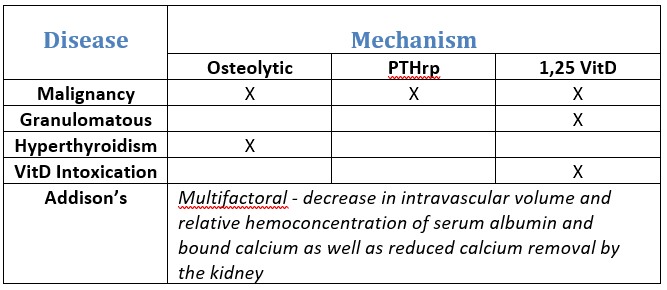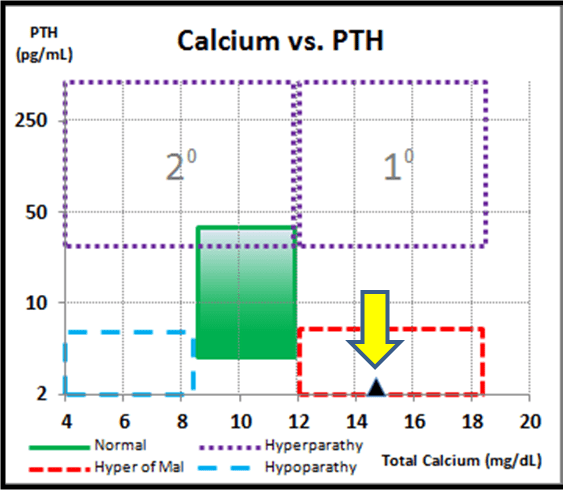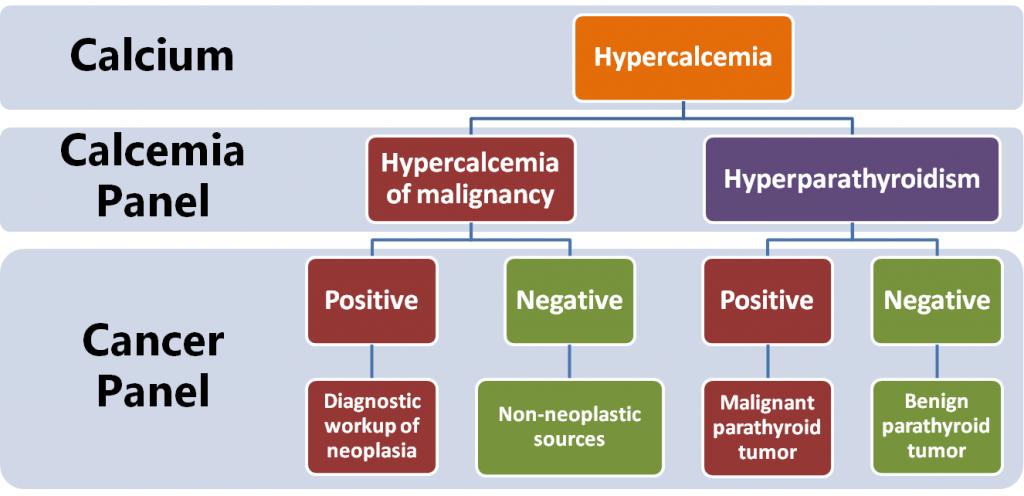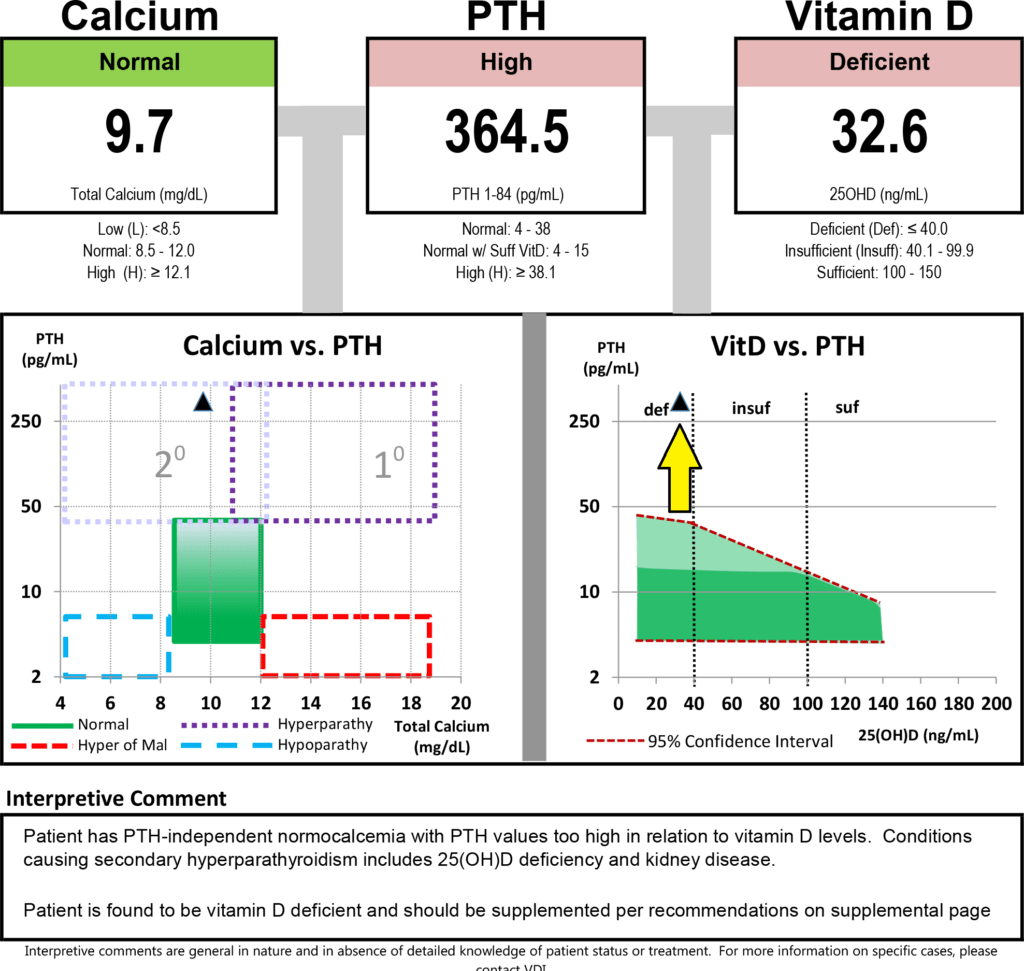
Calcemia Panel
Quickly and visually determine the root cause of hyper- or hypocalcemia in dogs and cats.
Determining the root cause of hypo or hypercalcemia should be quick. Using the Calcemia Panel, visually identify the source of the abnormal calcium. For results landing in the area of hypercalcemia of malignancy, a simple reflex to the Cancer Panel can rule in cancer as the cause.
The Calcemia Panel
VDI’s Calcemia Panel is a three biomarker panel for the determination of abnormal calcium levels. Unlike other similar panels, VDI offers gold-standard test for PTH [read more below] and Vitamin D, that are not currently available through other laboratories. Additionally, VDI graphs the results in a visual way that helps for quick result interpretation.
Common Applications:
- Hypercalcemia
- Hypercalcemia of Malignancy [read below]
- Hypocalcemia
Included Tests:
- Total Calcium
- PTH 1-84
- 25(OH)D – Vitamin D
Reports Include:
- Calcemia Panel Report w/ graph
- Vitamin D report
- Vitamin D dosing guidelines for insufficiency/deficiency
- Interpretative Comments
Sample Reports:
Hypercalcemia of Malignancy
The term “hypercalcemia of malignancy” is routinely used when calcium is elevated and PTH is below normal, and for good reason— this situation is often a result of malignant neoplasia, particularly lymphoma, anal sac adenocarcinoma, or multiple myeloma. However, many other diseases can fall into this category such as granulomatous disease, hyperthyroidism, vitamin D intoxication, and Addison’s disease.
There are 3 major mechanisms by which hypercalcemia of malignancy can occur:
- osteolytic activity with local release of cytokines (including osteoclast activating factors)
- tumor secretion of parathyroid hormone-related protein (PTHrP)
- production of 1,25-dihydroxyvitamin D (calcitriol).

When a patient presents with hypercalcemia of unknown origin, a good place to begin is with a calcium and PTH measurement. If hypercalcemia of malignancy is present, the VDI Calcemia Panel report will plot within the lower red zone:

To rule in/out neoplasia as the reason for hypercalcemia, reflexing to the VDI Cancer Panel will provide fast insight if neoplasia is suspect. If negative, other non-neoplastic causes can be further investigated.

PTH 1-84
VDI utilizes the gold-standard in Parathyroid Hormone testing: PTH 1-84. Unlike intact PTH (iPTH), VDI measures the entire PTH sequence (84 amino acids) with no fragment interference that is common with intact PTH; particularly the 7-34 fragment which often accumulates in renal disease. The assay is a sandwich chemiluminescent immunoassay that is run on a fully automated analyzer, validated for use in dogs, cats, and horses with serum.
In patients with renal disease the Calcemia Panel is the appropriate choice. The VDI Calcemia panel tests PTH 1-84, 25(OH) Vitamin D, and Total Calcium, making it very useful in renal patients to identify secondary hyperparathyroidism which are also often 25(OH)D deficient and most of the time can be corrected by supplementing with D3, which the report provides.


